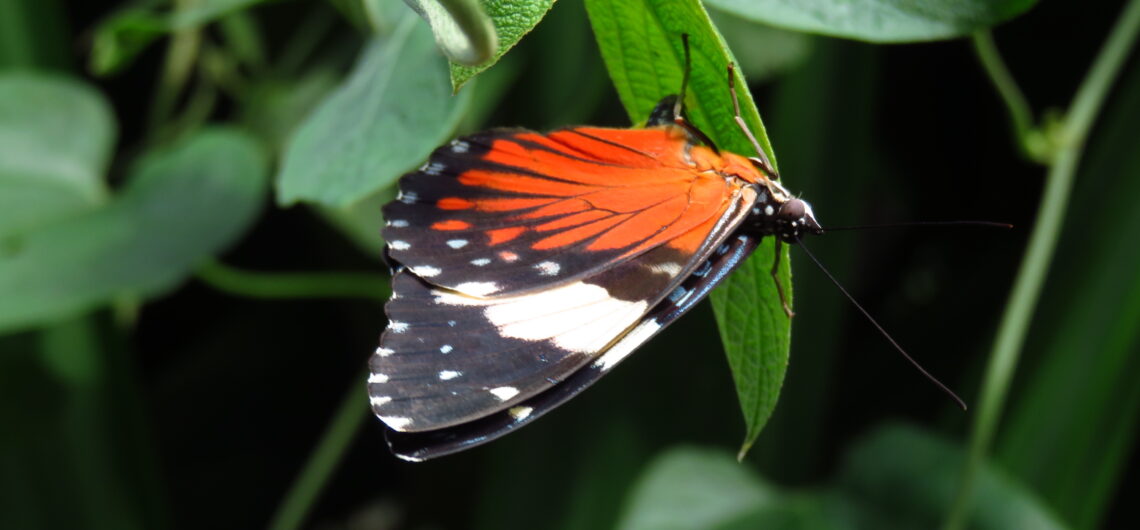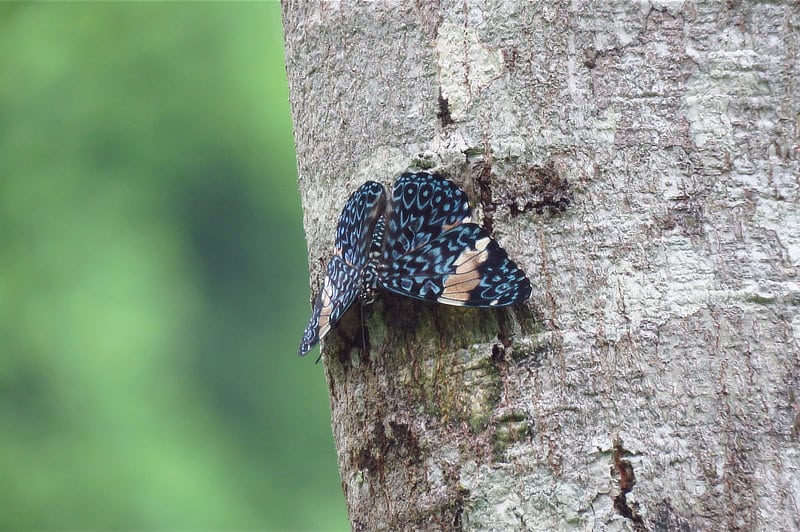Red Cracker
Hamadryas amphinome
The Red Cracker is a truly flashy butterfly! Among some very interesting behaviors, the Red Cracker butterfly is strikingly beautiful – bright metallic blue and black calico coloration on the upperside, bold white stripe across its forewings, complimented by fiery red-orange on the underside of the hindwing. Males and females are similar. It is a medium-sized brushfoot butterfly (family Nymphalidae) with a wingspan of 7.4-8.6 cm. Red Crackers rest head down on a tree trunk, often high up (10+ meters), with wings spread flat against the bark. While the calico pattern on the wings of some cracker species allows for camouflage with tree bark, the Red Cracker’s bright colors allow it to stand out and they are rather easy to spot. They descend to the ground to feed on rotting fruit, and will visit platform feeders.
The female Red Cracker butterfly lays tiny white eggs in a chain up to a dozen eggs, hanging on the underside of a leaf. Larvae are black with yellow mottling on their back, covered in branching black and orange spines. Larvae feed gregariously on their host plant, Dalechampia scandens (Euphorbiaceae) and live communally. The Hamadryas amphinome chrysalis appears as a dried, withering leaf.
The Red Cracker butterfly gets its name because the males are able to produce a crackling sound, reminiscent of bacon cooking in a frying pan. They make the sound when they take off, by twanging a pair of spiny rods on their abdomen against their anal claspers. Both males and females can detect the sound produced by the males, using tiny, hollow cells covered by membranes on their wings. As they vibrate, they stimulate nerve endings. It is thought that males produce this crackling sound as a territorial defense against other males, or possibly to attract females during courtship. The crackers (genus Hamadryas, 20 species) are found only in the American tropics, with several species venturing into the southern USA.
The Hamadryas amphinome is widespread throughout tropical America, from Mexico, throughout the Caribbean and Central America, and South America through the Amazon basin and south into Argentina. It is found in secondary and disturbed rainforest and dry forest, in the lowlands and foothills up to 1500 meters. In Panama, the Red Cracker can be found year-round at all the Canopy Family lodges, and is especially common at the Canopy Camp in Darién.


